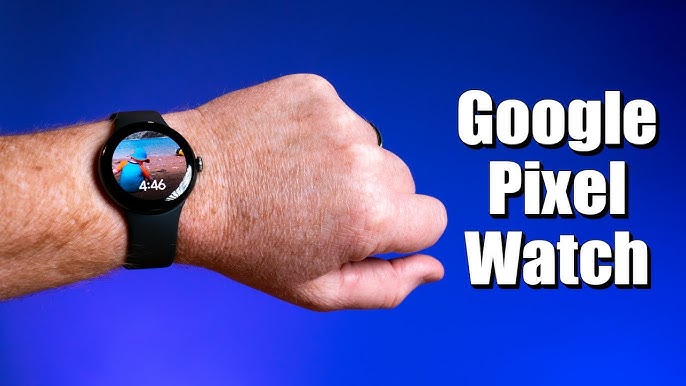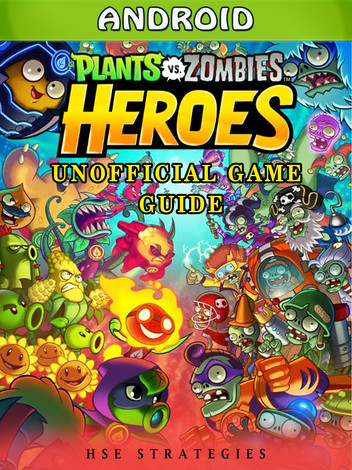
The Ultimate Guide to Android Smartwatches: More Than Just a Mini Phone on Your Wrist
In the ever-expanding universe of Android gadgets, the smartwatch has evolved from a niche novelty into a powerful, personal companion. Gone are the days of clunky, glorified pagers with abysmal battery life. Today’s Android wearables are sleek, sophisticated devices that serve as an extension of our digital lives, seamlessly integrating with our Android phones to offer convenience, health insights, and a touch of personal style. They are no longer just for tech enthusiasts but have become mainstream accessories for anyone looking to stay connected, active, and informed without being glued to their smartphone screen.
This article isn’t a dry technical breakdown. Instead, it’s a comprehensive guide for the everyday user. We’ll dive deep into the Android wearable ecosystem, decode what truly matters in the hardware, explore the power of software personalization, and provide actionable advice to help you choose the perfect digital companion for your wrist. Whether you’re a fitness fanatic, a busy professional, or simply curious about the latest Android news and trends, this guide will demystify the world of smartwatches and show you how they can genuinely enhance your life.
The Symbiotic Relationship: How Wearables Enhance Your Android Phone
The first and most crucial concept to grasp about an Android smartwatch is that it’s not a phone replacement; it’s a phone enhancer. Its primary purpose is to act as a smart filter and a convenient remote for the powerful computer in your pocket. This symbiotic relationship is built on providing the right information at the right time, with minimal friction, allowing you to be more present in the physical world.
Notifications, Triage, and Control
At its core, a smartwatch excels at managing the relentless stream of notifications we all face. Instead of your pocket buzzing and forcing you to pull out your phone for every single alert, your watch provides a discreet vibration and a quick summary. This is where the magic of “triage” comes in. A quick glance at your wrist is all it takes to decide if an alert is critical or can be ignored.
Real-World Scenario: Imagine you’re in an important work meeting. Your phone vibrates. Is it an urgent text from your family, or is it a social media notification? Instead of awkwardly pulling out your phone, you glance at your wrist. You see it’s an email from a mailing list. With a single swipe, you can dismiss the notification and return your full attention to the meeting, all without anyone noticing. For more important messages, many apps allow for quick replies using voice-to-text or pre-set responses, letting you handle essential communication instantly.
Seamless Integration with Google’s Universe
Modern Android smartwatches, particularly those running Wear OS, are deeply integrated with the Google ecosystem you already use on your Android phone. This creates a seamless and powerful user experience. Google Assistant on your wrist is a game-changer; you can set reminders, ask for weather updates, get quick translations, or control your smart home lights with a simple voice command, all without touching your phone.
Furthermore, features like Google Wallet transform your watch into a secure payment device. Paying for groceries or your morning coffee is as simple as tapping your wrist on the terminal. For navigation, Google Maps provides turn-by-turn directions directly on your watch face. This is incredibly useful when you’re walking or cycling in a new city, as you can keep your phone safely in your pocket and navigate with quick, haptic-feedback-guided glances at your wrist.
Beyond the Spec Sheet: Choosing the Right Android Gadget for Your Wrist
When shopping for a smartwatch, it’s easy to get lost in a sea of specifications like processor speeds and RAM. While these are important, the real-world user experience is defined by a combination of the operating system, battery life, and the quality of its health sensors. Understanding how these elements work together is key to finding the right device.

The Wear OS Revolution: Google and Samsung Join Forces
For years, the Android smartwatch market was fragmented. That changed dramatically when Google and Samsung collaborated to merge Samsung’s Tizen OS with Google’s Wear OS. This partnership created a unified, modern platform that has revitalized the entire ecosystem. The latest Android news in the wearable space is almost always centered around this powerful OS.
This unified Wear OS brings smoother performance, vastly improved battery efficiency, and, most importantly, access to a robust Google Play Store filled with quality apps. The main players in this space are:
- Samsung Galaxy Watch Series: Often considered the flagship standard for Android smartwatches, offering polished hardware, a unique rotating bezel for navigation (on the Classic model), and advanced health features.
- Google Pixel Watch: This is Google’s vision for a smartwatch, featuring a beautiful, minimalist design and the deepest integration with Fitbit’s best-in-class health and sleep tracking algorithms.
- Other Brands: Companies like Fossil, Mobvoi (with their TicWatch line), and Tag Heuer also produce compelling Wear OS watches, offering a variety of styles and price points.
Battery Life: The Achilles’ Heel and How to Manage It
Let’s be realistic: the biggest complaint about full-featured smartwatches is battery life. Most modern Wear OS devices, like the Galaxy Watch or Pixel Watch, will comfortably last a full day and night with moderate use, but you’ll likely be charging them daily. This is a trade-off for having a bright, fluid display, powerful processors, and constant health monitoring.
Best Practices for Battery Management:
- Use Bedtime/Sleep Mode: This turns off the display and notifications while you sleep, saving significant power while still tracking your sleep patterns.
- Disable the Always-On Display: While beautiful, keeping the screen on 24/7 is a major battery drain. Using the “tilt-to-wake” feature is often more than sufficient.
- Curate Your Notifications: In your watch’s companion app on your Android phone, choose only the most important apps to send notifications to your wrist.
- Use Battery Saver Mode: When you’re running low, this mode will disable non-essential features to extend the watch’s life until you can get to a charger.
Sensors and Health Tracking: Your Personal Wellness Coach
Modern Android gadgets for your wrist are packed with an incredible array of sensors. These go far beyond simple step counting. Standard sensors include an optical heart rate monitor, GPS for tracking runs and bike rides, and an SpO2 sensor for measuring blood oxygen levels. More advanced watches add ECG (electrocardiogram) for detecting signs of atrial fibrillation and even body composition analysis (on high-end Samsung models) to measure body fat and muscle mass. The data itself is useless without interpretation, which is where apps like Google Fit, Samsung Health, and the deeply integrated Fitbit platform come in, turning raw numbers into actionable insights about your activity, sleep quality, and overall wellness.
Making It Yours: The Power of Personalization in Wear OS
A smartwatch is an incredibly personal device, and the Wear OS software is designed to be deeply customizable. From the apps you install to the very face of the watch itself, you have the power to tailor the experience to your exact needs and style. This level of personalization is what transforms it from a simple gadget into an indispensable part of your daily routine.
The Play Store on Your Wrist: Essential Apps
The unification of Wear OS opened the floodgates for high-quality apps on the Google Play Store. This allows you to extend the functionality of your watch far beyond its default capabilities. The beauty lies in having apps that can function independently of your phone, especially on LTE-enabled models.
Practical Examples of Must-Have Apps:
- Music & Podcasts: Apps like Spotify, YouTube Music, and Pocket Casts allow you to download playlists and podcasts directly to your watch. Pair it with Bluetooth headphones, and you can go for a run or to the gym leaving your bulky phone behind.
- Fitness: While the built-in health apps are great, power users can install Strava or Komoot to sync their rides and runs with their preferred fitness community.
- Productivity: Google Keep is perfect for checking your shopping list at the grocery store. Todoist or TickTick can keep your tasks front and center. Google Maps, as mentioned, is an essential navigation tool.
- Convenience: Apps like Citymapper provide real-time public transit updates, and many airline apps now have Wear OS versions for a scannable boarding pass on your wrist.
Watch Faces: More Than Just a Pretty Display

The watch face is your home screen, your command center, and your primary point of interaction. It’s also your biggest opportunity for personalization. A watch face is a blend of aesthetics and function. You can choose a minimalist analog face for a classic look or a data-rich digital face packed with information.
The key to a functional watch face is “Complications.” These are small, customizable widgets that display bits of information from various apps. You can configure your watch face to show the current weather, your daily step count, the battery level, your next calendar appointment, and the UV index, all at a single glance. Third-party apps like Facer open up a world of thousands of community-designed watch faces, ensuring you can find one that perfectly matches your style and informational needs.
Tiles and Quick Settings: Information at a Swipe
The Wear OS interface is intelligently designed for quick interactions. Swiping left or right from your watch face cycles through “Tiles”—full-screen widgets that provide quick access to your most-used apps and information. You can customize the order and content of these Tiles to your liking.
Actionable Tip: Arrange your Tiles in order of importance. For example, you might place the Weather Tile first, followed by your daily activity goals, then your calendar, and finally a workout shortcut. This simple customization puts the information you care about most just a swipe away, dramatically improving the usability of your device.
Finding Your Perfect Match: Which Android Wearable is Right for You?
With a mature market, there’s no single “best” Android smartwatch—only the best one for *you*. Your choice should depend on your priorities, your phone, and your lifestyle. Here are a few common user profiles to help guide your decision.
Case Study 1: The All-Rounder (e.g., Samsung Galaxy Watch 6 / 6 Classic)

Who it’s for: The user with a modern Android phone (especially a Samsung) who wants a premium, feature-packed experience. They value a polished design, top-tier performance, and the most advanced health tracking available on the platform.
Why it fits: The Galaxy Watch 6 offers a brilliant, bright display, fast performance, and unique health metrics like body composition analysis. The “Classic” model brings back the fan-favorite physical rotating bezel for a satisfying and intuitive way to navigate the UI. It’s the jack-of-all-trades that does everything exceptionally well.
Case Study 2: The Google Purist (e.g., Google Pixel Watch 2)
Who it’s for: The Pixel phone owner or any Android user who craves the cleanest software experience and prioritizes best-in-class health and fitness tracking.
Why it fits: The Pixel Watch 2 is the embodiment of Google’s software-first approach. It runs a pure version of Wear OS and features deep integration with Fitbit’s powerful algorithms for sleep tracking, stress management (cEDA sensor), and activity monitoring. Its elegant, minimalist design is also a major draw for those who prefer a more understated look.
Case Study 3: The Fitness-Focused User on a Budget (e.g., Fitbit Charge/Versa or Mobvoi TicWatch E3)
Who it’s for: Someone whose primary goal is health and activity tracking and who values multi-day battery life above all else. They may not need a full-blown app store or on-wrist payments.
Why it fits: A device like a Fitbit Versa 4 offers fantastic health tracking, week-long battery life, and basic smart features like notifications. While it’s not a full Wear OS device, it integrates perfectly with any Android phone. Alternatively, a budget-friendly Wear OS watch like a Mobvoi TicWatch provides access to the app ecosystem at a more accessible price point, making it a great entry into the world of smartwatches.
Conclusion: The Future on Your Wrist
Android smartwatches have successfully transitioned from being futuristic novelties to practical, powerful, and personal tools. They are the ultimate accessory for any Android phone user, acting as a smart filter for our digital lives and a dedicated coach for our physical well-being. The key takeaway is that the value of these Android gadgets isn’t in their ability to replicate your phone, but in their ability to extend its most useful functions to a more convenient and less intrusive form factor.
When choosing a device, look beyond the spec sheet and consider your daily routines, your fitness goals, and your personal style. As we follow the latest Android news, we can expect the future to bring even more advanced health sensors, smarter AI-powered assistance, and hopefully, continued improvements in battery technology. The Android smartwatch is no longer just about telling time; it’s about helping you make the most of it.



